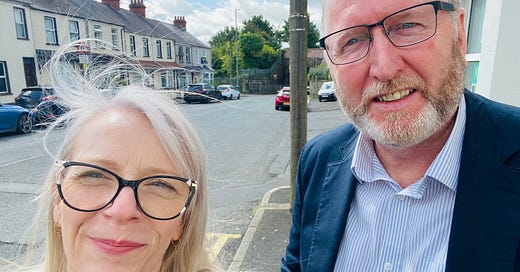Unlocking Policy Influence: How to Decide What to Ask For
Getting What You Want from Policymakers (Without Losing Your Mind in the Process)...
Influencing policy is a strategic endeavour. Whether you are a business leader, a non-profit advocate, or a concerned citizen, the power to shape public policy can drive substantial change. However, deciding what to ask for is a critical step that requires careful consideration. Before diving into tactics or deciding who to target, it's essential to have a clear understanding of what you want to achieve. Here’s a friendly guide on how to navigate this complex decision-making process.
1. Understand Your Environment
Before you can decide what to ask for, you need to fully understand the landscape in which you operate. Take a step back and assess the current environment, both internally and externally. Ask yourself questions like:
What are the pressing challenges in your industry or community?
How is the current public policy landscape affecting those challenges?
Are there existing regulations or initiatives that are either helping or hindering your objectives?
This analysis forms the foundation of your public affairs strategy. Understanding the challenges and opportunities within your environment will guide you in determining which policy changes would have the most significant impact.
Key Takeaway: Conduct an environmental scan to identify where public policy is affecting your operations, goals, or community. This will help you to pinpoint areas where policy changes can make a difference.
2. Define Clear Objectives: Long-Term and Short-Term
Once you have a good grasp of the environment, it’s time to clearly define your objectives. What exactly do you want to achieve? These objectives will be the cornerstone of your policy influence efforts. Typically, you’ll have both short-term and long-term goals. Some may be broad and ambitious, while others are more specific and achievable within a shorter timeframe.
For instance, let’s say you’re advocating for better climate action. Your long-term goal might be to influence national policy to prioritise renewable energy. However, in the short term, you could focus on securing increased funding for specific climate-related research initiatives.
It’s also common to have primary objectives, which are your main focus, alongside secondary objectives that support your broader mission. Prioritise your objectives based on their importance, feasibility, and the potential impact they could have.
Primary Objective: Increase Funding for Community Mental Health Services
Objective: Advocate for a dedicated fund of £5 million in the next budget specifically for community-based mental health initiatives. These funds would be directed toward grassroots charities delivering frontline support for mental health, especially in marginalised or rural areas.
Why It Matters: Mental health is a significant issue in Northern Ireland, where many communities continue to experience trauma and social isolation. Targeted funding would ensure local charities can expand their services, improve access, and meet the growing demand for mental health support.
Secondary Objective: Enhance Support for Youth Services in Disadvantaged Areas
Objective: Lobby for a government commitment to increase the existing funding for youth engagement programmes by 20% over the next three years. This funding would be aimed at charities working in areas of high deprivation, helping them develop skills programmes, mentoring, and safe spaces for young people.
Key Takeaway: Clearly defined objectives—both primary and secondary—give you direction and clarity on what to ask for. Prioritize these based on impact, urgency, and alignment with broader policy trends.
Keep reading with a 7-day free trial
Subscribe to Policy360 Substack to keep reading this post and get 7 days of free access to the full post archives.





